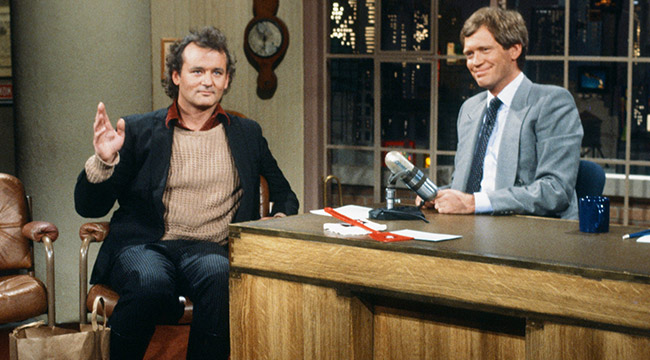
All this week, Uproxx‘s Late Night Week will take a look at late-night past, present, and future, from talk shows to late-night comedy, and beyond. Here’s an argument that the streaming age should do better by late night and talk show history.
It wouldn’t be fair to call February 21, 1983 a slow news day. Sectarian violence erupted in the rural Indian state of Assam. OPEC appeared on the verge of breaking up. And Patti Austin and James Ingram’s “Baby, Come to Me” continued its rocket ride to the top of the charts. But it wasn’t exactly a day filled with historical landmarks. But that doesn’t mean it isn’t worth revisiting. After all, in the middle of the night, after making some jokes about U.S. Presidents and just missing the chance to interrupt a Culture Club performance on Live at Five, David Letterman welcomed as his first guest the reclusive music genius Sly Stone, an icon who hadn’t been seen in years.
This isn’t just a matter of historical record. You can watch the whole episode right now. (And if you’ve got a spare 44 minutes, please, be our guest. We can wait until you’re done.)
That installment of Late Night With David Letterman is accessible in its entirety for two reasons: 1) Someone took the trouble to record it (in this case off a rebroadcast on the much-missed cable network trio, which regularly ran Late Night reruns in the early ‘00s) and upload it to YouTube. And 2) neither NBC nor Carson Productions has asked for it to be taken down.
Consequently, we have the whole episode of Late Night. And it’s a pretty fascinating episode. Stone is, for the most part, relaxed and charismatic. He’d barely made a public appearance in nine years, but anyone expecting a burned out casualty of fame instead got an easygoing music legend in a tracksuit. Even Letterman’s tough questions about missing shows and run-ins with the police — this was from a period when the host would go places others would not — don’t phase Stone. Mostly. When talk turns to the widely reported rumor that he once dated Doris Day, Stone gets a little nervous. (“I wouldn’t date that lady. I’d be too afraid. [Long pause.] Black folks gotta be cool…”)
He’s followed by Sandra Bernhard, making the first of many Late Night appearances and already making Letterman uncomfortable with her flirting, and, as part of segment called “Know Your Staff,” writer George Meyer, sporting a wispy Abraham Lincoln beard at the beginning of a career that would take him from Letterman to SNL to The Simpsons.
In short, it’s a time capsule, one that has both historical and entertainment value. And when Letterman announces the following night’s show will feature Bowery Boy Huntz Hall and an installment of Stupid Pet Tricks, it’s hard not to want to watch that show, too. Except you can’t since it hasn’t been uploaded. There’s a lot of talk show history on the internet, but it’s a history told in fragments.
This doesn’t have to be so. Putting aside logistics and rights issues — no small concerns, obviously — streaming technology could theoretically allow this history to live on. While box sets of whole seasons of The Tonight Show or The Late Late Show With Craig Ferguson or other shows was never feasible with physical media, streaming opens up possibilities that not every service is currently taking advantage of. Hulu, for instance, features a handful of recent episodes of Late Night With Seth Meyers but lets the older installments expire to make room for the new ones. Conan O’Brien has some of the most obsessive fans in comedy but similarly lets shows disappear after a few days.
There are no doubt good reasons for this, but are they good enough? Would any extra cost be worth absorbing to have, say, a Conan O’Brien equivalent of FX’s “Simpsons World” archives? Would fans conceivably pay for such a thing? That so much talk show history seems in danger of vanishing makes such a project all the more appealing. O’Brien’s stint hosting The Tonight Show has all but vanished from the internet. Valiant but incomplete efforts, like Shout Factory TV’s archive of highlights from The Dick Cavett Show just make it easy to wish for more. (Two nights with a young, alarmingly wired Robin Williams! Isaac Asimov with sideburns out to here!)
So maybe this is just wishful thinking on my part. And maybe it’s a wish specific to me. When I suggested this to Alan Sepinwall he mentioned “there’s the question of whether you want to be watching Johnny or Merv Griffin or Dave telling jokes about a decades-old news story that came and went in less than a week.” But the thing is I would want to watch that. (I’d probably then disappear down an internet rabbit hole trying to figure out what inspired the joke in the first place.) And I suspect I’m not alone in hoping for a future where the whole of talk show past is just a click away.
